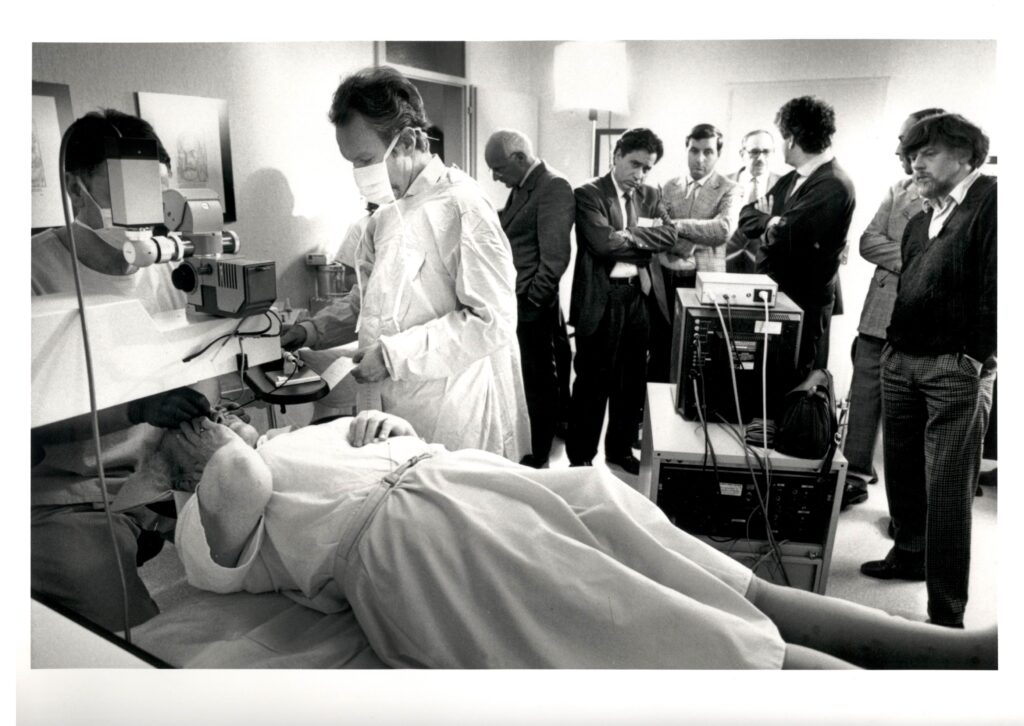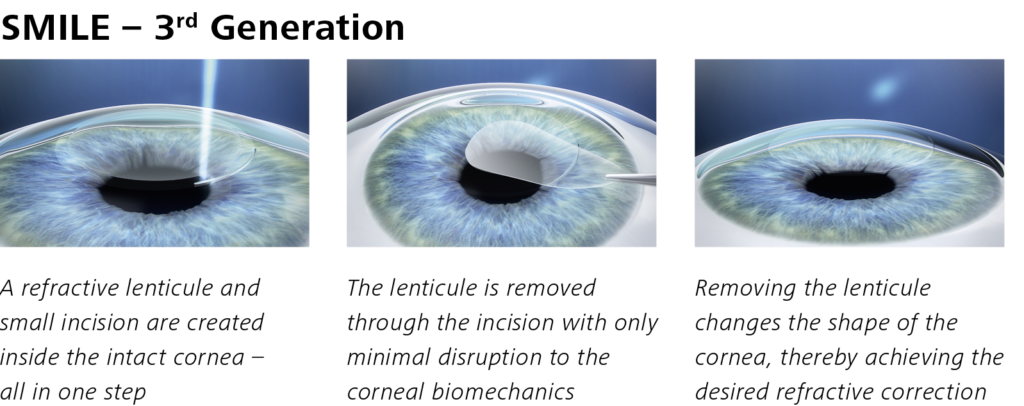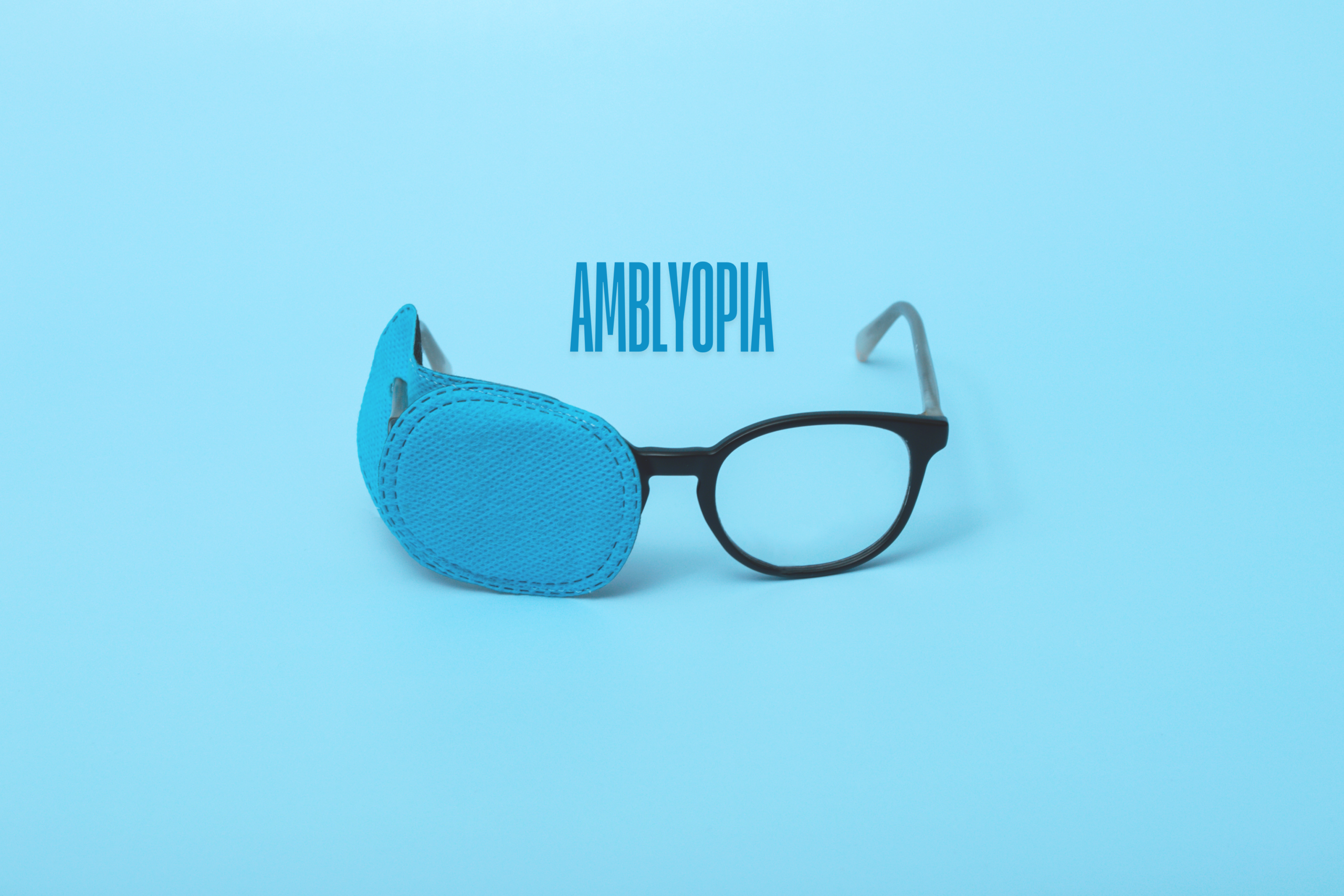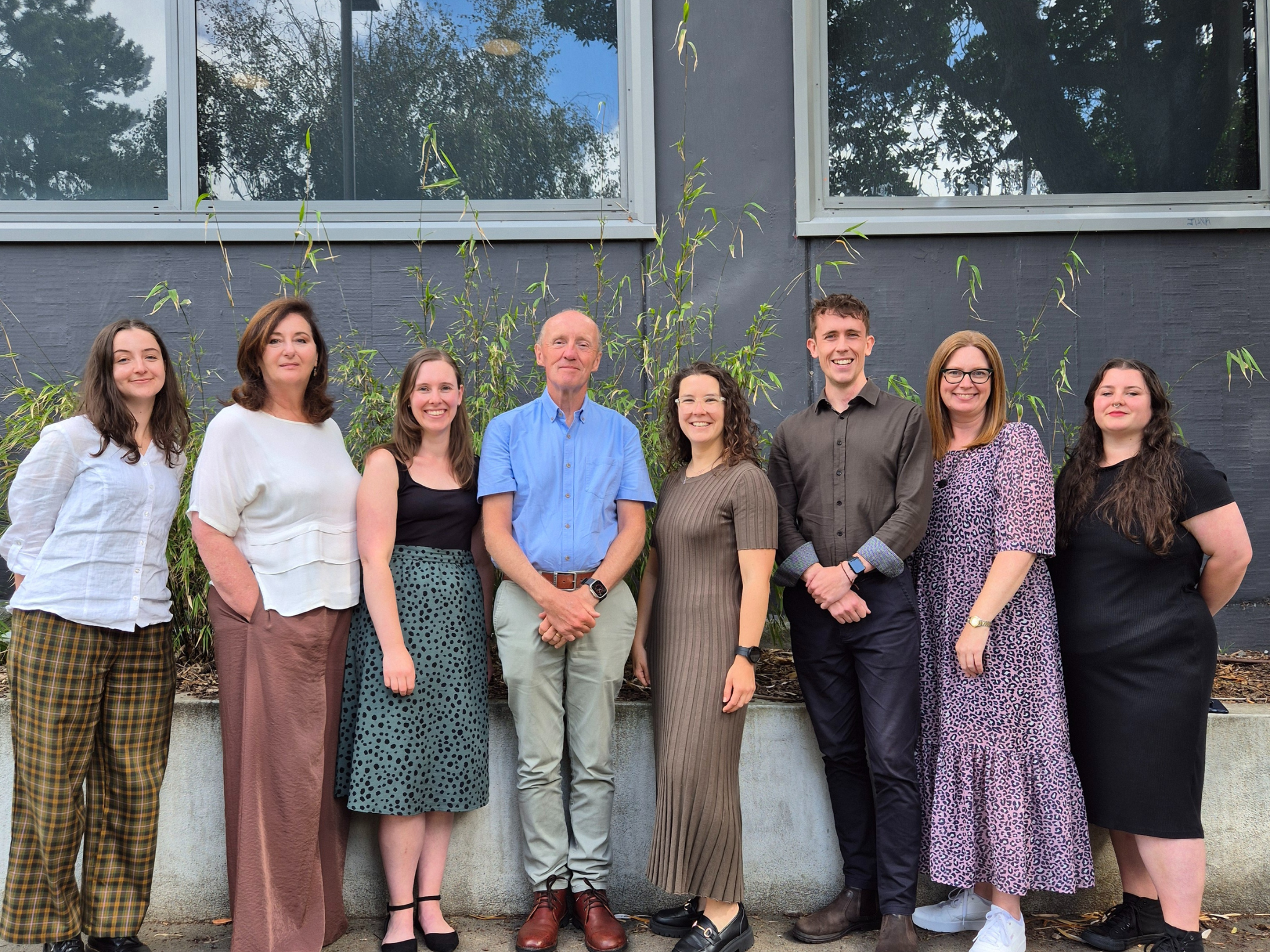Ophthalmologists have developed many different surgical techniques for refractive vision correction over the past century or so. The basis of the laser eye surgery we know today evolved from these less precise methods of refractive surgeries dating back to the late 1800s. However, it was in the 1980s that the use of lasers was introduced into refractive surgery and the evolution of laser eye surgery began.
What is refractive surgery?
Refractive surgery is any surgical method that corrects a refractive error such as myopia (near-sightedness), hyperopia (far-sightedness), astigmatism, or presbyopia. Refractive errors are due to light entering your eye not focusing on the retina to get a clear image.
This could be due to your cornea being too steep or your eye being too long, causing near-sightedness as the focal point is in front of the retina. In the case of far-sightedness, your cornea is too flat or your eye is too short, causing the focal point to be behind the retina. Whereas astigmatism means the cornea is an uneven shape and there are multiple focal points. Lastly, presbyopia is due to the lens inside your eye no longer being able to change shape easily to accommodate close-up objects.
The term refractive surgery includes procedures such as laser eye surgery which reshape the cornea at the front of the eye. As well as procedures that involve surgery inside the eye such as cataract surgery, and implantable contact lenses (ICLs). LASIK, a form of laser eye surgery and refractive surgery, is the most common elective surgery performed worldwide!

History of refractive surgery
In the 1890s, Dutch Ophthalmologist Dr Lendeer Jans Lans theorized that cuts made in the cornea could reshape the cornea and correct the corneal curvature. It wasn’t until the 1930s that the first attempts at refractive surgery were performed by Dr Tsutomu Tsato. His method was based on the research from Dr Lendeer and involved making radial cuts on the cornea. However, this technique reportedly lead to corneal degeneration which made it unfavourable. Although there were other ophthalmologists who followed on from this technique the most notable was Dr Svyatoslov N. Fyodorov, a Russian Ophthalmologist.
His work in the development of the technique of Radial Keratotomy (RK) laid down the foundation and principles for all other corneal refractive surgeries. Not only did he have ground-breaking work in the field of corneal refractive surgery, but he was also a pioneer in intra-ocular lens implantation, glaucoma treatment, and other micro-surgeries.
Around the same time in 1963, Dr Jose Ignacio Barraquer developed the keratomileusis procedure. This technique was still rather imprecise and involved removing a layer of the cornea, freezing it in nitrogen, reshaping it, and then reimplanting it on the eye. He is often hailed as the father of modern refractive surgery.
Evolution of refractive surgery to laser surgery
The invention of the Excimer Laser in 1975 by physicists at IBM was the start of precision refractive surgery. There were a few more years of research before the first laser eye surgery procedure. This involved testing the laser on leftover turkey and observing that there was no thermal damage on the surrounding flesh. During the experimental stage, it was found that it was able to reshape organic tissue so precisely that it could cut words into a piece of human hair.
Dr Marguerite McDonald was fascinated by the research of Dr Steven Trokel and his experiments and began working with him in 1984. The team began developing photo-refractive keratectomy (PRK) doing cadaver and non-human trials. The first successful PRK treatment was performed in 1988 on a brave volunteer. A patient who was due to lose her eye due to orbital cancer. The team followed her recovery and found the refractive outcome to be on target.
The success of this treatment meant the FDA allowed for human trials to start immediately. Although it wouldn’t be until 1995 that it would become commercially available. PRK has evolved dramatically over the years and is still a commonly used procedure.
During the trial phase of PRK, the first LASIK procedure was performed. LASIK has now surpassed PRK in becoming the most widely performed elective surgery.
Slightly more recently was the development of ReLeX SMILE® which revolutionised refractive surgery, thanks to its minimally invasive, keyhole nature.
Types of laser eye surgery
There are three types of laser eye surgery performed today. Each procedure is slightly different, with different recoveries and aftercare. When choosing which laser eye surgery to have there are a number of factors that might affect which surgery is recommended for you. Dr Andrew Logan specialises in all three procedures.
PRK/LASEK
As we’ve said PRK was the first laser eye surgery successfully performed in 1988. It then gained FDA approval in 1995, although it was being performed around the world before then. Dr Logan opened the second laser eye surgery clinic in New Zealand in 1994, performing PRK. The technology has moved forward in leaps and bounds since then, with the PRK we know today being quite different from the original procedure.
PRK is known as a surface treatment. First, using special tools the surgeon removes the epithelium. Then the laser reshapes the cornea underneath. That epithelial layer then has to regrow which causes a slower visual recovery and can have slightly more discomfort than other procedures.
PRK may be the preferred surgery for you if you have slightly thinner corneas.
LASEK is a derivative of PRK, with the key difference being that LASEK preserves the epithelial layer and then replaces it. It was thought that this would give a faster recovery time. When in reality surgeons often found the opposite. Leaving PRK to remain the most popular “surface ablation” technique.

LASIK
With the invention of more precise surgical cutting tools, early iterations of LASIK were born. The first LASIK was performed in 1990 but it would be another 6 years before it gained FDA approval. Dr Logan was the first to perform LASIK in New Zealand in 1996.
These first procedures used a microkeratome blade to create a hinged corneal flap. The excimer laser, as used in PRK, then reshapes the cornea. Before the flap is then replaced. This reduces the healing time and overall discomfort following the procedure compared to PRK. There were drawbacks to using the microkeratome.
But it wasn’t long until the femtosecond laser began being used to create the flap. This allowed for far more precision, was relatively painless and came with a quick recovery. Femto-LASIK is currently the most common laser eye surgery worldwide.

SMILE®
The revolutionary SMILE procedure came on the scene in 2006 – over 15 years ago now! It was launched internationally in 2011. Here at the Wellington Eye Centre, we started performing SMILE surgeries in 2013.
SMILE surgery is a keyhole surgery that is performed entirely using a state-of-the-art VISUMAX® femtosecond laser by Carl Zeiss Meditech. The laser separates a small piece of tissue, called a lenticule, in the centre of the cornea. This is then removed through a small keyhole incision on one side of the cornea. This makes it a minimally invasive procedure with a faster healing time.
SMILE is able to treat higher levels of myopia and myopia with astigmatism compared to PRK and LASIK. Although there is research underway and it may be possible in the future to treat hyperopia and presbyopia as well. The faster healing time means there’s less risk of infection and you can get back to your day-to-day activities faster!

Why laser eye surgery?
Laser eye surgery is less invasive than other refractive surgery options, it has a generally quick visual recovery and is low risk in terms of complications and post-surgical infections. This makes it an attractive option and both eyes are able to be treated on the same day.
Whereas lens replacement surgery is slightly more invasive and therefore is usually performed a week apart to minimise the risk of vision loss.
The evolution of laser eye surgery has been rapid and it continues to evolve. Dr Andrew Logan has been at the forefront of laser eye surgery development, being the first surgeon in New Zealand to perform LASIK as well as have LASIK performed on himself. As well as being an early adopter of new technology such as the VISUMAX 800 which we installed last year, as the first in New Zealand.

If you are interested in having laser eye surgery then give us a call on 0800 733 327. Or fill out the book a free assessment and someone from our team will get back to you with more information. We’d love to hear from you!
SMILE®and VISUMAX® are registered trademarks of Carl Zeiss Meditec.

Common Medications Used in Laser Eye Surgery

Amblyopia and Laser Eye Surgery

How Much Does Laser Eye Surgery Cost in 2025?

SMILE into Summer

What are the visual requirements to join the Police in NZ?

Common Medications Used in Laser Eye Surgery

Amblyopia and Laser Eye Surgery

Meet The Team at the Wellington Eye Centre

How Much Does Laser Eye Surgery Cost in 2025?

